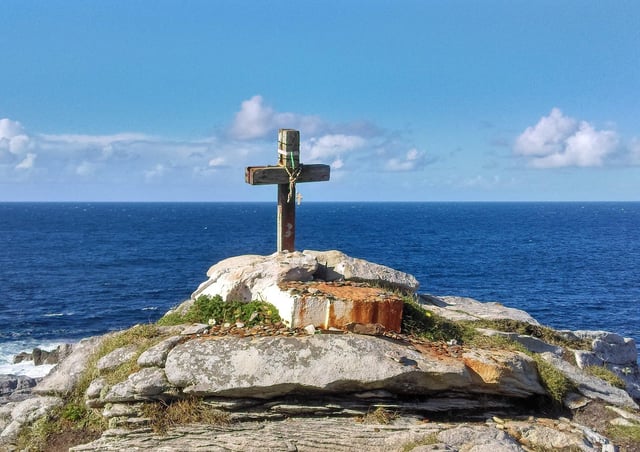Among the wrecks surveyed and researched by Macdonald are three which lie on the seabed off the North coast of Co. Donegal: the White Star liner ‘Justicia’, HMS ‘Audacious’ and the SS ‘Empire Heritage’.
In the book, Macdonald provides an interesting account of the ships’ time afloat and reveals how they eventually sank, while marine artist Robert Ward turns the wrecks into stunning undersea landscapes.
Rod’s journey around our coasts starts with the classic recreational diving shipwrecks at Scapa Flow in the Orkney Islands from giants such as the German WWI battleships, Markgraf, König and Kronprinz Wilhelm, to the legendary WWI British cruiser, HMS Hampshire, on which Lord Kitchener perished on a voyage to Russia in 1916.

He then travels to the English Channel where he covers such famous ships as the P&O liners, Moldavia and Salsette, which were lost during WWI, with many others such as the SS Kyarra and the British submarine HMS/M M2 – the first submarine to carry a seaplane for reconnaissance.
The reader is then taken to the North Channel of the Irish Sea – off the coast of Malin Head in Inishowen – where the famous technical diving wrecks of the Justicia, HMS Audacious, the first British battleship lost during WWI, and the SS Empire Heritage, which was lost with its deck cargo of Sherman tanks on a voyage from New York during WWII, are beautifully illustrated.
Macdonald says “it has taken a personal underwater journey of more than 30 years’ diving to get into the position of being able to put all this information into one book.” He says he hopes the book will appeal to anyone “interested in the sea and the mysteries it holds.”
Turning to the wrecks off the coast of Donegal, Macdonald reveals that the wreck of the massive 32,234-tonne Royal Mail Ship RMS Justicia – its bows are of the size and scale of the Titanic’s – lies on a clean white sandy bottom in 70 metres of crystal clear Atlantic water, 25 miles out from Malin Head. On July 19, 1918, Justicia was sailing unladen from Belfast to New York escorted by destroyers when she was torpedoed by a German Type III Coastal U-boat, UB-64. Justicia took on a list but the watertight doors were closed in time, temporarily preventing her from sinking. However, UB-64 then fired two more torpedoes at Justicia, striking her side. The escorts were able to damage UB-64 which left the area while radioing in Justicia’s position. A fourth torpedo struck the wounded Justicia but she still remained afloat.
Most of the crew were evacuated, leaving only a small number on board but the ship was unable to use its engines and was taken in tow by the tug Sonia which intended to beach the stricken ship safely at a suitable location near Lough Swilly. The following day, UB-124 found the Justicia and fired two more torpedoes which struck her amidships. By noon, the remaining crew had been evacuated and the vessel rolled over onto its side and sank. In total, Justicia had been hit by six torpedoes. The destroyers Marne, Milbrook, and Pigeon attacked with depth charges and sank UB-124 with gunfire after she surfaced. Today, Justicia lies 25 miles north-west of Malin Head in waters 223 ft deep.
Also lying on the sea bed off the coast of Malin Head is the 598-foot King George V class battleship HMS Audacious which has the dubious honour of being the first British battleship to be sunk during World War One – on October 27, 1914. At the beginning of the First World War, Audacious was part of the 2nd Battle Squadron of the Grand Fleet. On October 27, 1914, the 2nd Battle Squadron – consisting of the ‘super-dreadnoughts’ King George V, Ajax, Centurion, Audacious, Monarch, Thunderer and Orion – left Lough Swilly to conduct gunnery exercises. In the middle of a turn, Audacious ran upon a mine laid by a German auxiliary minelayer off Tory Island. Thinking that the ship had been attacked by a submarine, the captain hoisted the submarine warning, and the rest of the squadron steamed away from possible danger. The light cruiser Liverpool stood by, while Audacious broadcast distress signals by wireless. The Commander-in-Chief of the Grand Fleet, Sir John Jellicoe, ordered every available destroyer and tug out to assist, but did not dare send out battleships to tow Audacious because of the apparent submarine threat. Meanwhile, the White Star liner Olympic, older sister of the infamous Titanic, arrived on the scene. Unsuccessful attempts were made to tow her back into Lough Swilly. Her crew were evacuated on to HMS Liverpool and the Olympic and she eventually sank. No lives were lost. Jellicoe immediately proposed that the sinking be kept a secret to which the Board of Admiralty and the British Cabinet agreed – an act open to ridicule later on. For the rest of the war, Audacious’ name remained on all public lists of ship movements and activities. However, many Americans on board Olympic were beyond British jurisdiction and discussed the sinking. Many photos, and even one moving film, had been taken. By November 19, the loss of the ship was accepted in Germany. Today, Audacious lies upside down in 67 metres of water 24 miles off the coast of Malin Head.
Also sunk off the Inishowen coast was the SS Empire Heritage, a ship of 15,702 tons which was carrying dozens of Sherman tanks (pictured above) They all lie scattered in a sort of time capsule on the sea bed in relatively shallow water at 228 ft. The Empire Heritage convoy was sailing from New York to Liverpool when it was torpedoed on September 8, 1944 as the war was drawing to a close. The tanker was under the command of Captain James Campbell Jamieson and had on board a cargo of military tanks, vehicles, 16,000 tons of fuel, 88 crew and 73 passengers. The submarine that destroyed it, U-482, had been patrolling the North West approaches since August 16 and had already sunk the tanker Jacksonville, HMS Hurst Castle and SS Fjordheim by the time it encountered the Empire Heritage and convoy HXF-305. In the early hours of September 8, U-482, under the command of Kapitanleutnant Hartmut Graf von Matuschka, fired a number of torpedoes at the convoy, successfully striking the Empire Heritage on its starboard side abaft the bridge. Within ten minutes, the tanker had capsized and sunk with the loss of 113 crew and passengers. The Pinto, a convoy rescue ship, was sunk shortly afterwards by the same submarine as it attempted to rescue survivors from the Empire Heritage. The survivors from both ships were picked up by HMS Northern Wave and landed in Derry. Today the ship lies on the seabed alongside its cargo of Sherman tanks and 20 ton trucks – yet another sunken relic of the sea.
○ ‘Great British Shipwrecks’, by Rod Macdonald, is published by Whittles Publishing.
Source link



